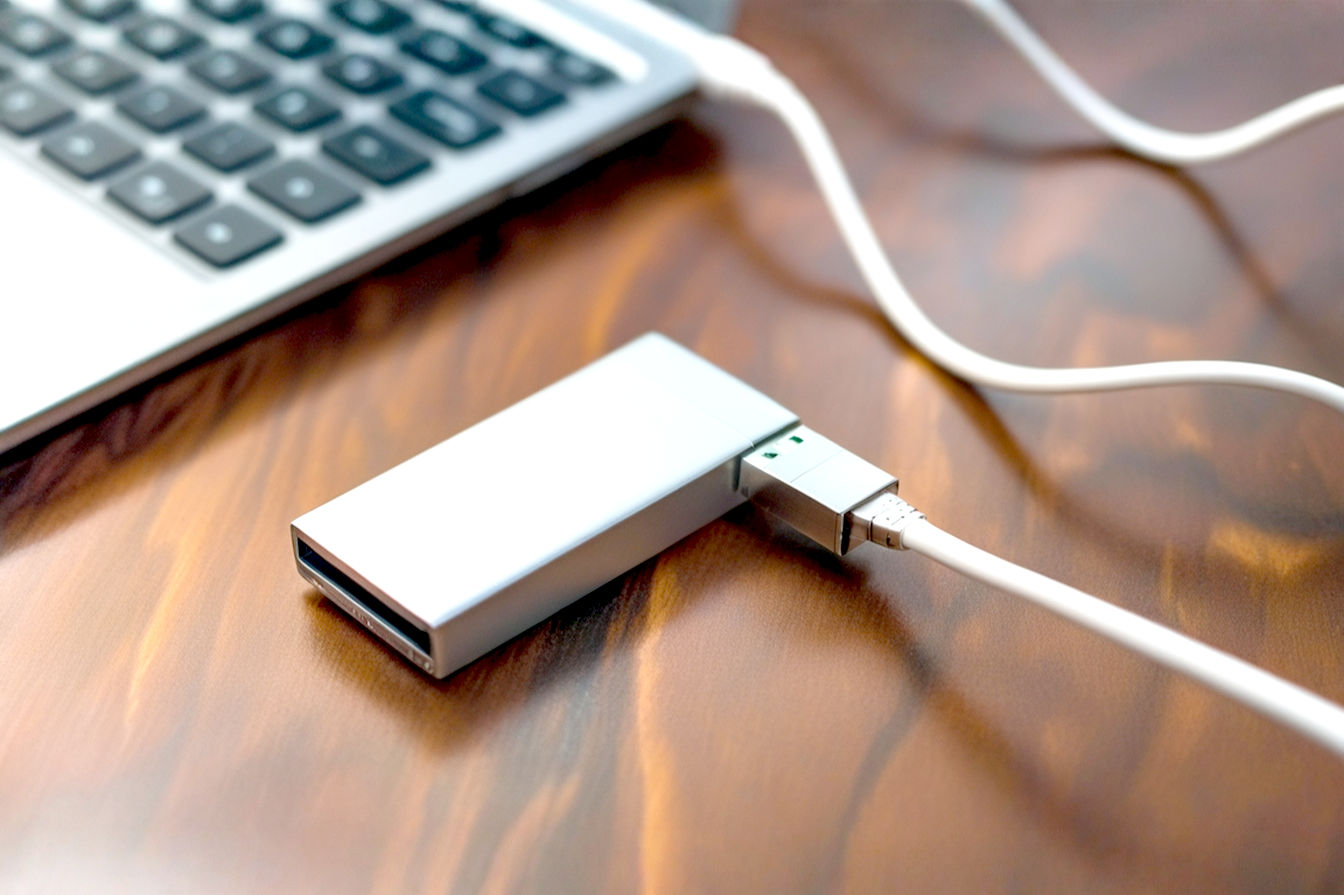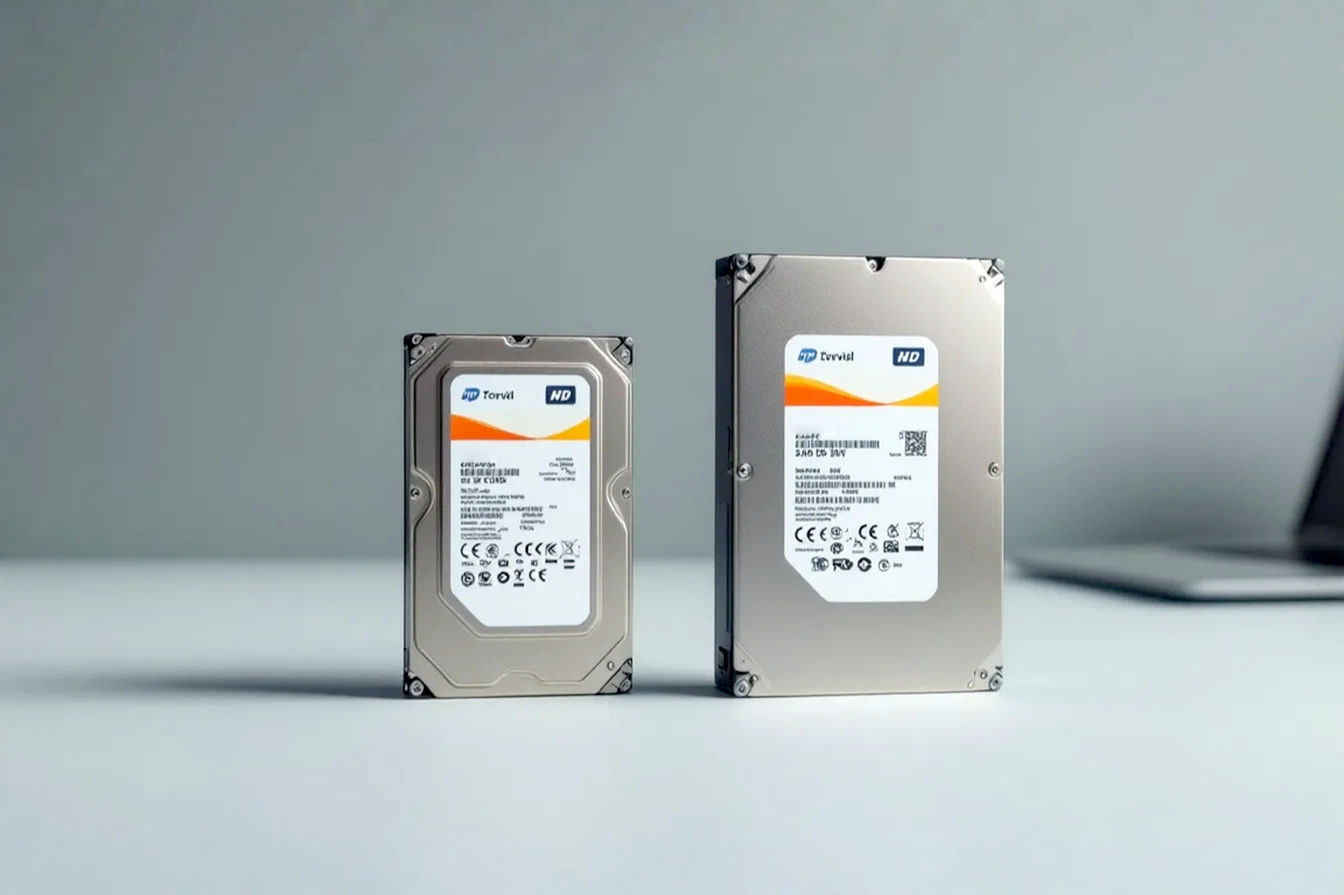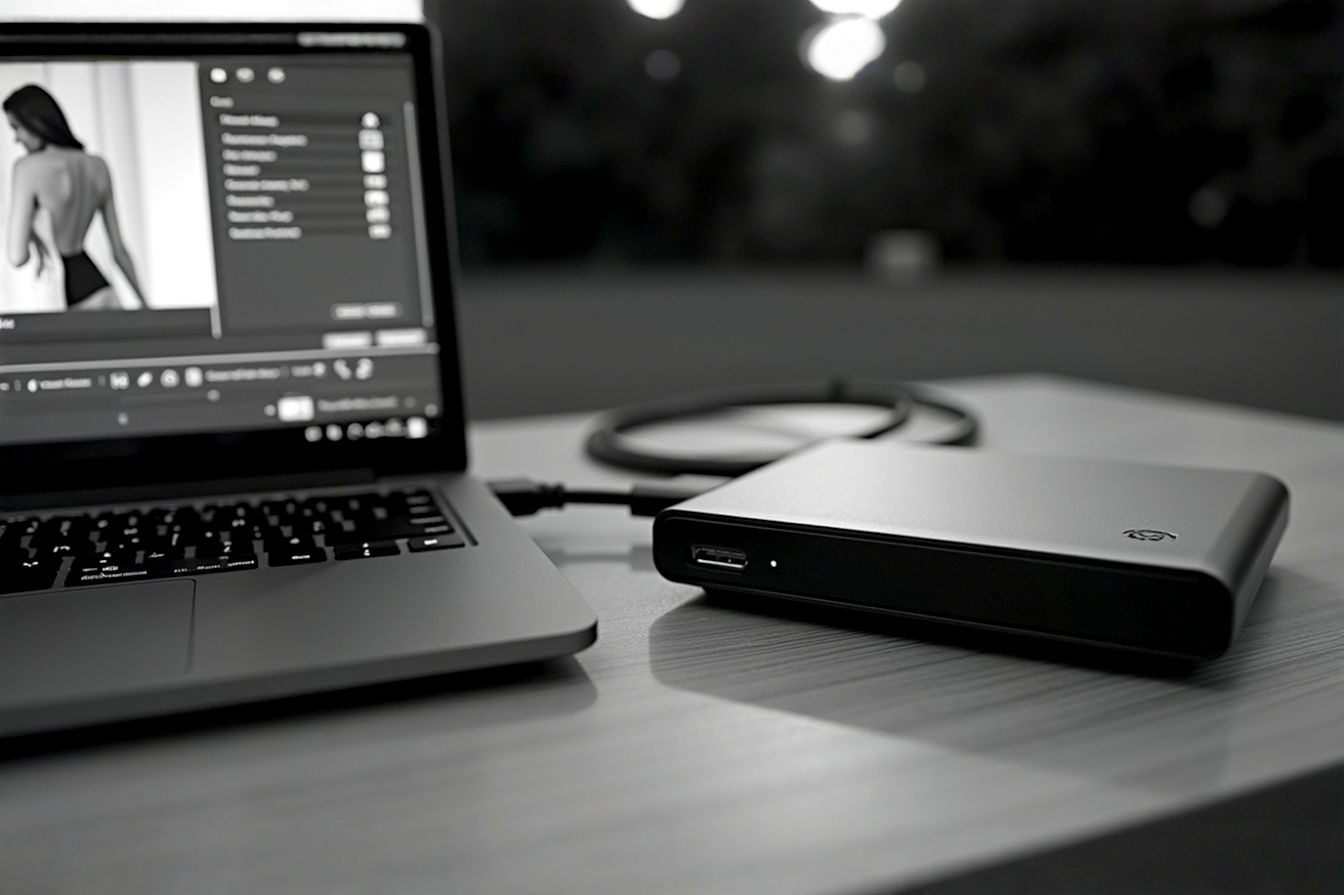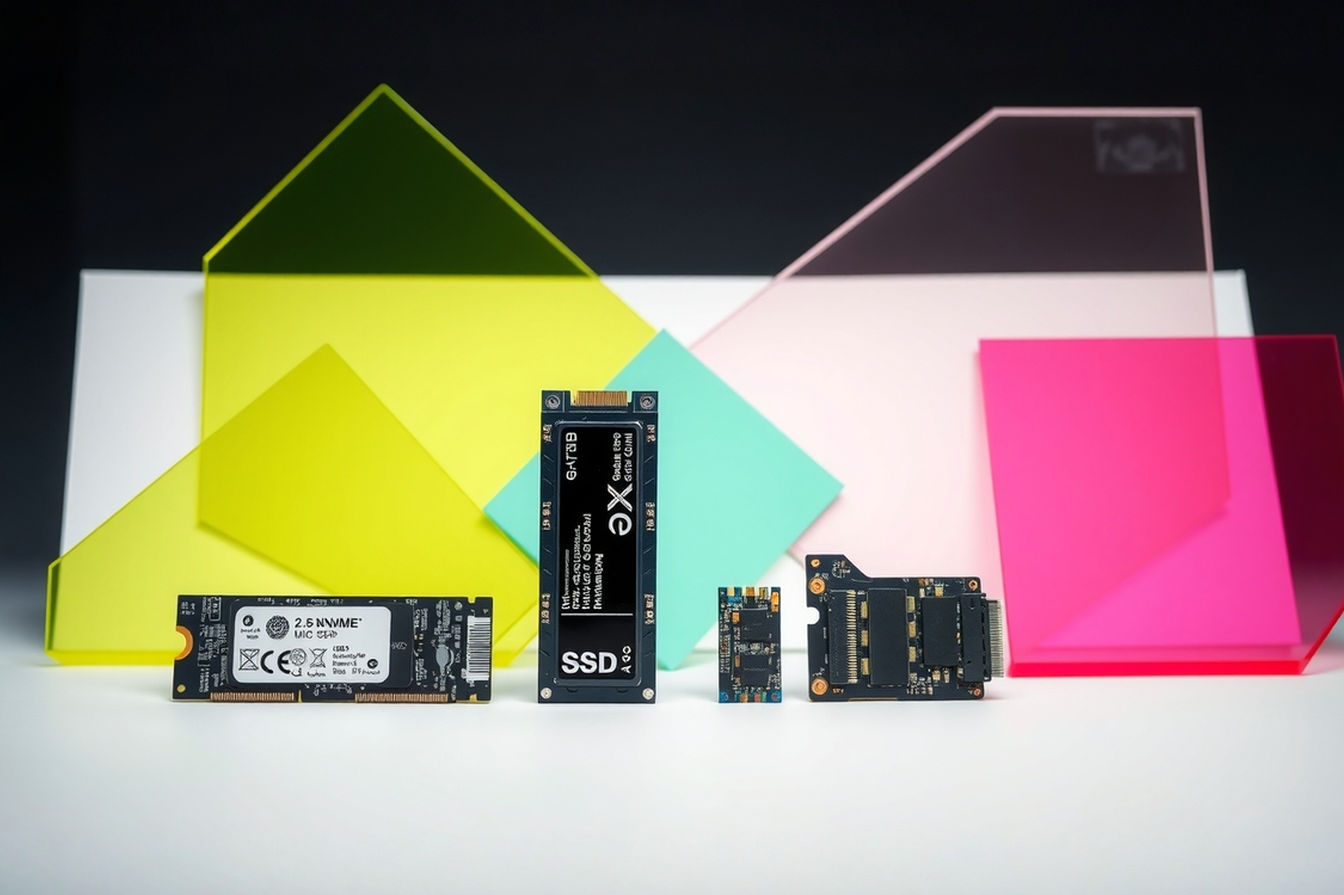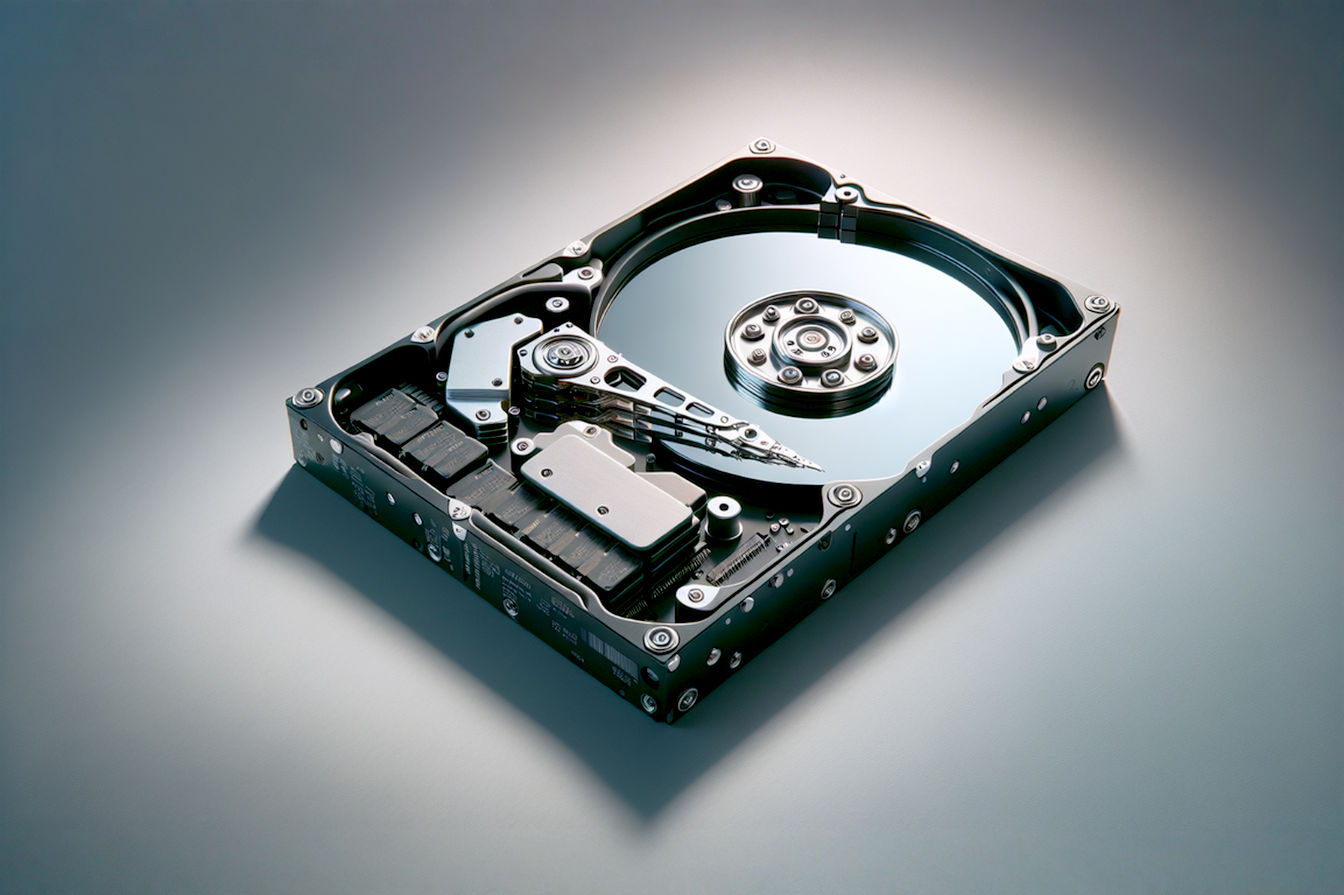This post may contain affiliate links. If you make a purchase through these links, we may earn a commission at no additional cost to you.
Upgrading your PC’s storage is one of the most impactful changes you can make for overall performance. If you’re still running on a traditional hard disk drive (HDD), switching to a Solid State Drive (SSD) feels like getting a whole new computer. Everything loads faster – your operating system, applications, and games. While super-fast NVMe SSDs get a lot of attention, a 2TB SATA SSD offers a fantastic blend of capacity, speed, and value that’s perfect for many users. This guide will walk you through everything you need to know to pick the right one for your setup.
Why Upgrade to a 2TB SATA SSD?
Maybe your current boot drive is a small SSD, or perhaps you’re still using an old, slow hard drive. Either way, a 2TB SATA SSD provides a massive boost. Why 2TB? It’s a sweet spot for many users today. It offers enough space for your operating system, essential applications, a large game library, and plenty of files without constantly worrying about running out of room.
SATA SSDs connect using the same interface as older HDDs, making them compatible with a vast majority of desktop PCs and laptops built over the last decade or more. This makes them an easy upgrade path, often just requiring you to swap out the old drive. While not as fast as NVMe drives that use the M.2 slot and NVMe protocol, SATA SSDs are still dramatically faster than HDDs. They offer sequential read/write speeds typically up to around 550 MB/s and significantly improve random access times, which is crucial for day-to-day tasks like opening files and launching programs. For many users, the real-world difference between a high-end SATA SSD and a mid-range NVMe drive for general computing isn’t as noticeable as the jump from an HDD to any SSD.
Understanding SSD Basics
Before diving into specific features, let’s cover the fundamental technology behind SSDs.
What is an SSD and How Does it Work?
An SSD, or Solid State Drive, stores data electronically using NAND flash memory chips. Unlike HDDs that use spinning magnetic platters and moving read/write heads, SSDs have no moving parts. This is where the “solid state” name comes from.
NAND flash memory is a type of non-volatile storage, meaning it retains data even when the power is off. Think of it like a grid of tiny cells, each capable of holding an electrical charge. The level of charge in a cell determines whether it represents a 0 or a 1 (or multiple bits, depending on the technology). Data is written to and read from these cells electronically.
The lack of moving parts makes SSDs much faster, more durable, and more power-efficient than HDDs. They can access data almost instantly from anywhere on the drive, unlike HDDs which need to physically move the read/write head to the correct location on the platter.
SATA Interface Explained
The SATA (Serial ATA) interface is the standard connection used by most traditional storage drives in PCs. It’s been around for a while, evolving through several revisions.
- SATA I (1.5 Gb/s): The first generation, with a theoretical maximum speed of 150 MB/s. You won’t find modern SSDs using this.
- SATA II (3 Gb/s): Doubled the speed to a theoretical maximum of 300 MB/s. Some older SSDs might use this, but it’s also uncommon now.
- SATA III (6 Gb/s): The current standard for most SATA drives, offering a theoretical maximum speed of 600 MB/s.
Most 2TB SATA SSDs you’ll find today use the SATA III interface. While the theoretical maximum is 600 MB/s, real-world speeds for top SATA SSDs typically max out around 550 MB/s due to overhead. This speed is more than sufficient for booting your OS, loading applications, and general file access, providing a massive upgrade over HDDs which typically offer sequential speeds under 200 MB/s and much slower random access.
Why Choose SATA Over NVMe?
NVMe SSDs are the newer, faster kids on the block. They connect via the M.2 slot (or sometimes PCIe slots) and use the NVMe protocol, which is designed specifically for fast flash storage. NVMe drives can offer sequential speeds many times faster than SATA SSDs, often exceeding 3000 MB/s.
So why consider SATA for your 2TB upgrade?
- Compatibility: SATA is universally compatible with most modern motherboards. If your motherboard doesn’t have an M.2 slot, or if all your M.2 slots are already in use, a 2.5-inch SATA SSD is likely your easiest option.
- Price: Per gigabyte, SATA SSDs are generally more affordable than NVMe SSDs, especially at higher capacities like 2TB. You get more storage for your money.
- Sufficient Performance: For everyday tasks, web browsing, office work, and even most gaming, the speed difference between a high-end SATA SSD and an NVMe SSD isn’t always dramatically noticeable in real-world use. The biggest bottleneck is often elsewhere in the system or the application itself. If you’re not constantly transferring massive files (like 4K video editing projects), a SATA SSD is probably fast enough.
A 2TB SATA SSD is an excellent choice for a primary boot drive and general storage in compatible systems, offering a significant performance upgrade over an HDD without the higher cost or potential compatibility issues of NVMe.
Key Factors to Consider When Choosing a 2TB SATA SSD
Not all 2TB SATA SSDs are created equal. Several technical factors influence their performance, longevity, and price. Understanding these will help you make the best choice.
Performance Metrics
When looking at SSD specifications, you’ll see several numbers related to speed. The most common are:
- Sequential Read/Write Speeds: These measure how quickly the drive can read or write large, contiguous blocks of data. This is relevant for tasks like transferring large files or loading big game levels. For 2TB SATA SSDs, you’ll typically see sequential speeds advertised around 500-550 MB/s for reads and 450-530 MB/s for writes.
- Random Read/Write Speeds: This measures how quickly the drive can access small pieces of data scattered randomly across the drive. This is much more important for everyday tasks like booting your operating system, launching applications, and loading game assets, as these involve accessing many small files quickly. Random performance is often measured in IOPS (Input/Output Operations Per Second). Higher IOPS numbers mean better random performance. Look for drives with high random read/write IOPS, ideally in the range of 80,000 to 100,000+ for both.
While sequential speeds are often prominently advertised, pay close attention to random performance (IOPS) as it has a bigger impact on how fast your PC feels for typical use.
NAND Flash Types
The NAND flash memory chips are where the data is stored. Different types of NAND flash store a different number of bits per cell. This affects cost, performance, and endurance.
- SLC (Single-Level Cell): Stores 1 bit per cell. Fastest, most durable, but most expensive. Rarely used in consumer SSDs, especially at 2TB capacity.
- MLC (Multi-Level Cell): Stores 2 bits per cell. Good balance of speed, endurance, and cost. Less common in newer consumer drives compared to TLC.
- TLC (Triple-Level Cell): Stores 3 bits per cell. The most common type found in modern consumer SSDs, including many 2TB models. Offers a good balance of cost and performance. Endurance is lower than MLC but still sufficient for most users.
- QLC (Quad-Level Cell): Stores 4 bits per cell. Offers the highest capacity per chip and is the cheapest to manufacture. Performance can be slower, especially for writes after the cache is filled, and endurance is lower than TLC.
For a 2TB SATA SSD, you’ll most likely be choosing between TLC and QLC NAND.
- TLC drives generally offer better sustained write performance and higher endurance (more data can be written over the drive’s lifetime) compared to QLC.
- QLC drives are typically more affordable at the same capacity. They often use a large SLC cache (more on this below) to boost initial write speeds, but performance can drop significantly when writing large amounts of data continuously after the cache is full.
If performance and longevity are top priorities, a TLC drive is preferable. If budget is the primary concern and your workload doesn’t involve writing huge amounts of data frequently, a QLC drive might be acceptable.
Controller
The controller is essentially the brain of the SSD. It manages the NAND flash memory, handles reading and writing data, performs error correction, manages wear leveling (distributing writes evenly across cells to extend lifespan), and communicates with the rest of the PC via the SATA interface.
The quality and sophistication of the controller significantly impact the SSD’s overall performance and reliability. Different controllers have varying levels of performance, efficiency, and feature support. Some common controller manufacturers include Phison, Silicon Motion (SMI), Marvell, and Samsung (who design their own controllers).
While you don’t need to become an expert on every controller model, knowing that the controller is a critical component helps explain why two SSDs with the same type of NAND might perform differently. Reputable brands typically use high-quality controllers.
DRAM Cache
Many high-performance SSDs include a small amount of DRAM (Dynamic Random-Access Memory), typically 256MB, 512MB, or 1GB for larger drives. This DRAM acts as a high-speed cache for the SSD’s mapping table (also called the Flash Translation Layer or FTL). The FTL is like a map that tells the controller where each piece of data is physically located on the NAND chips.
Having a DRAM cache allows the controller to quickly access this map, significantly speeding up random read and write operations, especially when the drive is heavily utilized.
DRAM-less SSDs save cost by not including this DRAM cache. They often use a portion of the main NAND flash (sometimes configured as SLC cache) or the host system’s RAM (Host Memory Buffer – HMB) to store the mapping table. While HMB can help, DRAM-less drives generally have lower random performance, particularly under heavy load or when the drive is nearly full, compared to drives with a dedicated DRAM cache.
For a 2TB drive, which will hold a lot of data and likely be used for demanding tasks, an SSD with a dedicated DRAM cache is highly recommended for consistent performance.
Endurance (TBW and MTBF)
SSD endurance refers to how much data can be written to the drive over its lifetime before the NAND flash cells start to wear out. NAND flash cells can only withstand a finite number of program/erase cycles. Endurance is typically measured in TBW (Terabytes Written). A 2TB SATA SSD might have a TBW rating ranging from around 400 TBW (for QLC) to over 1200 TBW (for TLC).
What does this mean in practice? If a 2TB SSD has a TBW rating of 600 TBW, it means you can theoretically write 600 terabytes of data to it before it might start experiencing issues related to wear. For most average users, writing 600 TB of data takes many, many years. Even if you write 100 GB of data every single day, it would take over 16 years to reach 600 TBW.
Another metric is MTBF (Mean Time Between Failures), usually measured in hours (e.g., 1.5 million hours). This is a statistical measure of the average time a device is expected to operate before a failure. While higher is better, TBW is generally a more relevant indicator of the drive’s lifespan for typical consumer use, as you’re more likely to hit the write endurance limit before a random component failure.
For a 2TB drive, which is likely a primary storage device, look for a higher TBW rating, especially if you plan on writing large amounts of data frequently (e.g., video editing, frequent large file transfers). A 5-year warranty is also a good indicator of a manufacturer’s confidence in the drive’s endurance.
Form Factor
The vast majority of 2TB SATA SSDs come in the standard 2.5-inch form factor. This is the same size and shape as laptop hard drives and fits into the same drive bays in desktop PCs and laptops. They connect via a standard SATA data and power cable.
Some motherboards also have M.2 slots. While M.2 slots are primarily used for faster NVMe drives, they can also support SATA SSDs (specifically, M.2 drives that use the SATA protocol instead of NVMe). An M.2 SATA SSD looks like a small stick of gum. However, for a 2TB capacity, the 2.5-inch form factor is much more common and generally offers better value. Ensure your motherboard has a compatible 2.5-inch drive bay and SATA ports, or an M.2 slot that specifically supports SATA if you go that route (check your motherboard manual!).
Features
Modern SSDs include several background features that help maintain performance and data integrity:
- TRIM: An ATA command that allows the operating system to tell the SSD which data blocks are no longer in use (because files have been deleted). This helps the SSD’s garbage collection process work more efficiently, preventing performance degradation over time. Ensure your operating system (Windows, macOS, Linux) supports and has TRIM enabled.
- Garbage Collection: An internal process run by the SSD controller that cleans up invalidated data blocks in the background, making them ready to be written to again. This is crucial for maintaining write performance.
- S.M.A.R.T. (Self-Monitoring, Analysis, and Reporting Technology): Allows the drive to report its health status to the operating system and monitoring software. You can use utilities to check the drive’s temperature, wear level, and other metrics.
- Encryption: Many SSDs support hardware-based encryption (like AES 256-bit) to protect your data if the drive is lost or stolen. This requires compatible software or operating system support (like BitLocker in Windows Pro/Enterprise).
While most modern SSDs support TRIM and Garbage Collection, checking for S.M.A.R.T. support is useful for monitoring drive health. Hardware encryption is a valuable feature if data security is a concern.
Comparing 2TB SATA SSDs
With the technical terms out of the way, let’s look at how to compare actual drives on the market.
Top Contenders/Popular Models
Several manufacturers produce excellent 2TB SATA SSDs. While specific model names change, here are some well-regarded series known for performance and reliability (as of late 2024/early 2025):
- Samsung SSD 870 EVO: Often considered a benchmark for SATA SSDs, known for excellent performance, reliability, and features like a robust controller and DRAM cache. Uses TLC NAND.
- Crucial MX500: Another highly popular and well-regarded series, offering a great balance of performance, endurance, and value. Uses TLC NAND and has DRAM.
- Western Digital (WD) Blue 3D NAND / WD Red SA500: WD offers solid SATA options. The Blue series is aimed at general consumers, while the Red SA500 is designed for NAS (Network Attached Storage) but works well in PCs, often featuring higher endurance. Both typically use TLC NAND and have DRAM.
- SK Hynix Gold S31: A strong performer that often competes directly with Samsung and Crucial, offering excellent speed and value. Uses TLC NAND and DRAM.
- Kingston KC600 / KC600: Kingston has various SATA drives. The KC series is usually their higher-performance line, featuring TLC NAND and DRAM. Their more budget-focused drives might use QLC or be DRAM-less.
When comparing models, look at reviews from reputable tech websites that perform detailed benchmarks, especially focusing on sustained write performance and random IOPS, which reveal the true capabilities beyond the headline sequential speeds.
Performance Benchmarks
Review sites use various tools to benchmark SSDs, such as CrystalDiskMark, AS SSD Benchmark, and PCMark 10.
- CrystalDiskMark: Provides sequential and random read/write speeds (often 4K random reads/writes with multiple queues and threads, denoted as 4K QT). This is a good quick comparison tool.
- AS SSD Benchmark: Similar to CrystalDiskMark but uses incompressible data, which can sometimes show a difference in performance depending on the controller. It also provides an overall score.
- PCMark 10 Storage Test: This is a more real-world benchmark that simulates common tasks like booting Windows, launching applications, copying files, and gaming. Scores from this test are often the best indicator of how fast a drive will feel in everyday use.
When comparing benchmarks, look for consistency. A drive with high peak speeds but poor sustained performance (especially writes) might feel fast initially but slow down during large file transfers. Drives with strong 4K random performance will feel snappier for general tasks.
Price vs. Performance vs. Endurance
Choosing the “best” drive involves balancing these three factors based on your needs and budget.
- Budget User: If cost is the main driver, a 2TB QLC drive without DRAM might be the most affordable option. Be aware of potentially lower sustained write speeds and endurance, but for light use (web browsing, office apps, some gaming), it could be perfectly adequate.
- Average User: Most users will find the best value in a 2TB TLC drive with DRAM. These offer excellent all-around performance for everyday tasks, gaming, and moderate content creation, with sufficient endurance for many years of use. Drives from Crucial, SK Hynix, and WD Blue often fall into this sweet spot.
- Performance/Endurance Focused User: If you frequently work with large files, perform heavy multitasking, or want maximum longevity, a premium 2TB TLC drive with high TBW (like the Samsung 870 EVO or WD Red SA500) is worth the extra cost.
Consider the manufacturer’s warranty as well. A 5-year warranty is standard for quality drives and provides peace of mind.
Installation and Setup
Once you’ve chosen your 2TB SATA SSD, installing it is usually straightforward.
Physical Installation
- Desktop PC: Locate an available 2.5-inch drive bay in your case. You might need a 2.5-inch to 3.5-inch adapter bracket if your case only has larger bays. Connect a SATA data cable from the drive to an available SATA port on your motherboard and a SATA power cable from your power supply unit (PSU) to the drive. Secure the drive in the bay.
- Laptop: This varies greatly depending on the laptop model. Many laptops have a dedicated 2.5-inch drive bay, often accessible via a panel on the bottom. Some ultra-thin laptops might not have space for a 2.5-inch drive. Consult your laptop’s manual or look for online guides specific to your model. You’ll typically need a small Phillips head screwdriver.
Always power off your PC and unplug it from the wall before installing or removing components. Ground yourself by touching a metal part of the case to discharge static electricity.
Migrating Your OS and Data
If the new SSD is replacing your old boot drive, you’ll likely want to transfer your operating system, applications, and files without reinstalling everything. This is called cloning.
Most major SSD manufacturers (Samsung, Crucial, WD, etc.) provide free cloning software with their drives or as a download from their website. You’ll need to connect both your old drive and the new SSD to the PC simultaneously (this might require temporarily connecting the new SSD externally via a USB adapter if you only have one drive bay).
The cloning software will copy the entire contents of your old drive to the new SSD, making it bootable. Follow the software’s instructions carefully. Once cloning is complete, you can swap the drives (install the new SSD where the old boot drive was) and your PC should boot from the new, faster SSD.
If the new SSD is just for additional storage, you simply install it physically, initialize it in Disk Management (in Windows) or Disk Utility (in macOS), and format it before you can start using it.
Basic Optimization
For optimal performance, ensure a couple of settings are correct:
- AHCI Mode: Make sure your motherboard’s SATA controller is set to AHCI (Advanced Host Controller Interface) mode in the BIOS/UEFI settings before installing the operating system. AHCI is designed for SSDs and enables features like TRIM and Native Command Queuing (NCQ), which improve performance. If your OS was installed in IDE mode, you might need to switch to AHCI and make a registry change or reinstall the OS.
- TRIM Enabled: TRIM should be enabled by default in modern operating systems when they detect an SSD. You can verify this using command-line tools (e.g.,
fsutil behavior query DisableDeleteNotifyin Windows Command Prompt – a result of 0 means TRIM is enabled).
These steps ensure your operating system communicates effectively with the SSD to maintain its speed and health.
Living with Your New SSD
SSDs are generally low-maintenance, but a few practices can help ensure long-term performance and reliability.
Maintaining Performance
- Avoid Filling the Drive Completely: Try to leave some free space on your SSD, ideally 15-20%. When an SSD is nearly full, its performance can decrease because the controller has less free space to manage data and perform garbage collection efficiently.
- Enable TRIM: As mentioned earlier, ensure TRIM is enabled. This allows the SSD to properly manage deleted data blocks.
- Firmware Updates: SSD manufacturers occasionally release firmware updates that can improve performance, fix bugs, or enhance compatibility. Check the manufacturer’s website for a utility that can check for and install firmware updates for your specific drive model.
- Avoid Defragmentation: Unlike HDDs, SSDs should not be defragmented. Defragmentation writes data unnecessarily and contributes to wear on the NAND flash without improving performance (since SSDs can access data randomly very quickly). Modern operating systems should automatically disable defragmentation for SSDs.
Troubleshooting Common Issues
Most SSD issues are related to connectivity or software settings.
- Drive Not Detected: Double-check the SATA data and power cable connections. Ensure the drive is securely seated in its bay or slot. Check your motherboard’s BIOS/UEFI settings to see if the SATA port is enabled and if the drive is detected there.
- Slow Performance: Verify AHCI mode is enabled and TRIM is working. Check if the drive is nearly full. Ensure you’ve installed the latest drivers for your motherboard’s SATA controller. Run benchmarks to see if the performance is significantly below expectations.
- Operating System Issues After Cloning: If you cloned your old drive and are having boot problems, ensure you set the new SSD as the primary boot device in your BIOS/UEFI settings. Sometimes, running the cloning software again or performing a clean install of the OS on the new drive might be necessary.
If you suspect a hardware issue with the drive, use the manufacturer’s diagnostic tool (if available) or S.M.A.R.T. data to check its health. If it shows signs of failure and is under warranty, contact the manufacturer for a replacement.
Conclusion
Choosing the best 2TB SATA SSD for your PC involves understanding your needs, the technology behind the drives, and comparing key specifications like NAND type, controller, DRAM cache, and endurance. While NVMe drives offer higher peak speeds, a 2TB SATA SSD provides ample capacity and a significant performance boost over traditional hard drives, making it an excellent upgrade for many users at a more accessible price point.
By focusing on drives with TLC NAND, a dedicated DRAM cache, and a reputable controller, you can ensure you get a drive that offers a great balance of speed, reliability, and longevity for years to come. Remember to consider your budget and typical workload, and don’t forget to properly install and optimize the drive for the best experience. A 2TB SATA SSD is a smart investment that will make your PC feel faster and more responsive for everything you do.

